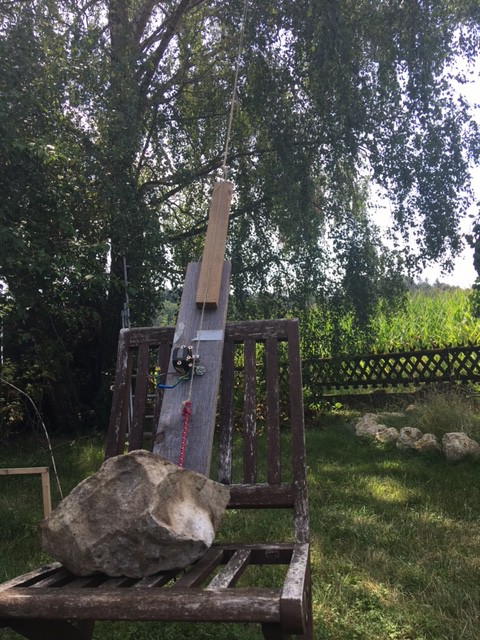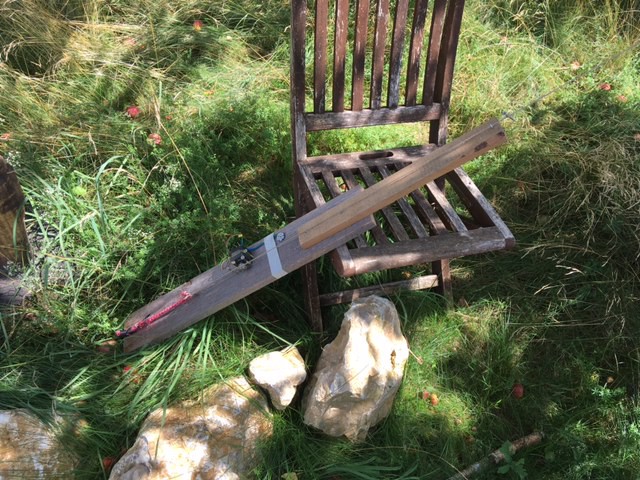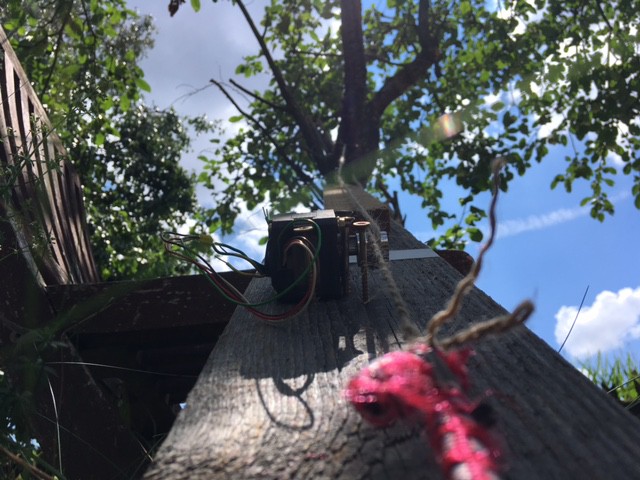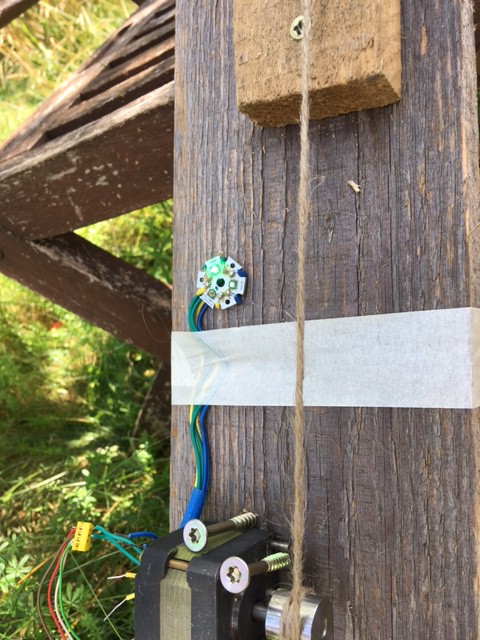-
The data collection begins!
09/04/2018 at 14:49 • 5 commentsToday I tied a Dyneema fishing rope with 80kg of max draw weight to the big birch in our garden. The birch is around 15m high and the point where the string is attached is at about 8m. The string goes then around two spools, one is attached to a rotary encoder, and to a 300gram weight which gives the string the tension. The data from the rotary encoder is then collected by an Arduino Uno and saved with a timestamp onto a SD card. There are 5 datapoints per second collected. The overview:
The spools are sitting on ballbearings, everything is 3D-printed:
The whole setup is encapsulated in a lunch box and screwed to a wooden plate. The Arduino is connected to a power bank with 10000mAh which should provide power for several days.
Cant wait to see the first data! Unfortunately there is not much wind at the moment. -
Harvester Stringsensor V1 CAD
09/04/2018 at 14:22 • 0 commentsWe travel back in time about two weeks. I had some discussions with friends and I decided to have a position sensor based on a string instead of based on pipes as described in the last blog post. Also the string will between the middle of the tree stem and the ground, not between two trees. The sensor itself is basically a string which wraps around a roller which is connected to a rotary sensor. When the string is pulled it rotates the roller and therefore the rotary sensor, well..., it rotates. It is similar to the designs positional sensor manufacturers are using:
![string pot position sensor]() My design there are two spools, so the string does not wind up, and my design uses a weight as the pullback force, not a spring:
My design there are two spools, so the string does not wind up, and my design uses a weight as the pullback force, not a spring:The next step is to print out the holding structure, the spools and assemble everything.
-
Parts and a special guest arrived!
08/18/2018 at 15:24 • 0 commentsToday the sensors for the displacement over time measurement arrived. I have now a rotation sensor, three distance sensors and a SD card adapter in my box waiting to be connected to an ESP32.
And... finally and long awaited this was yesterday delivered to me :-)
Very nice machine with a great bang for the buck! Looking to forward to print all the part I need for getting the sensors on the tree! :)
-
The show must go on! aka How much energy is in a swing?
08/13/2018 at 09:37 • 5 commentsAfter taking a break from the project, I'm now back! I will not put as much effort into it as I did before the Power Challenge deadline, but I want to make contious progress.
I had some interesting discussions with a friend of mine about measuring the energy trapped in the tree swing. My original idea was to mount a cylinder between the tree in question and another point in space (like another tree, a house or a pole). Inside the cylinder is a spring, such that the movement of the tree compresses the spring. Now I can measure the absolute position and therefore calculate the force needed to compress or stretch that spring. With that information I can then calculate the work (or energy) which is needed to compress the spring. But my friend objected, since the spring is springy, I can not do this continously (it is only valid for one swing), I have to dissipate the energy somewhere otherwise I can not differentiate if the system is swinging on its own or its swinging from a fresh blow of wind.
Currently I see two ways to approach the energy estimations:
- Estimate the spring constant and the dampening by deflecting the tree with a known force and observe the movement. Mount a positional sensor onto the tree and calculate with the movment data then the energy trapped in there. See also the sketch below.
- Use a more handson approach and build a generator which is more capable
then my small stepper motor generator and use the energy harvested to charge up a battery or to heat up a power resistor. Monitor voltage and current and calculate the energy which has been harvested. Off course I need more data about the treeswing (eg amplitude) first, so basically I am back to approach 1.
![]()
I think building the position sensor is really the first thing I should do. What do you guys think, which approach is better (in terms of getting results and effort to build it)? Or would you go a completely different route with the research?
-
Shall I continue?
07/29/2018 at 20:15 • 6 commentsShall I continue with the project? If yes, please tell me in the comments! If you are interested in why I'm asking that question, please continue reading.
As you propably already noticed there was no update within the last week. The reason behind it is my current lack of motivation. As most of you know, I took part at the Hackaday challenge. I put a lot of effort into the project and its optimization to the judgement criteria, so I was quite confident that I will get into the next round. Unfortunately I didn't. That alone is not so bad, Im sure that there are hundreds of people out there who can do projects which are more innovative, better conducted and nicer documented than my project. Therefore it is ok when projects are chosen which are equally or better that my projects (better in this context means measured by the judgment criteria). But and here comes the big but... In the Power Harvesting Challenge there were several project chosen where I, even if I try to be objective as possible in my situation, not understand why the judges have chosen this project over mine (and countless others which I was sure they will be in the final round).Just to recap, the judgment criteria for the first round are:
- Is this a unique solution to a particular challenge facing the world today?
- How thoroughly documented were the design process & design decisions?
- How easily can this design be implemented by other people in future projects?
- How complete is the project?
So, chosen have been projects which are not unique at all:
- https://hackaday.io/project/87345-mini-vertical-wind-generator-3d-printed
The first Vertical wind generator I found on Thingiverse dates 2010!
https://www.thingiverse.com/thing:1689 - https://hackaday.io/project/159305-impulse
This project is basically a bicycle dynamo, which are used since the early 20th century. The earliest patent for a dynamo directly attached to the wheel is dated 1913! I can currently buy hundreds of models of this kind of "power harvesting" technology.
Other projects are more or less fake:
- https://hackaday.io/project/159520-p-cell-urea-electrical-power-harvesting-device
- https://hackaday.io/project/159232-phytoplankton-power-hybrid-microbial-fuel-cell Both projects are coming from the same guy. He builds a copper-zinc battery, which is known since 1836 and also called a Daniell cell. https://en.wikipedia.org/wiki/Daniell_cell. You can use basically every water based liquid which has a certain amount of conductivity. Eg saltwater, blood, pee, acid soltutions, etc. The list is endless, but the energy comes not from the electrolyte but from the the potential difference between copper and zinc. So both projects are basically a copper-zinc battery which use two different electrolytes and will stop working when the copper and zinc is used up! I don't know how the judges could missed that. Also the "reactions cells" he designed for both projects are the same. So throwing a little around with buzzwords and Hackaday rewards you with 2000$!
And last but not least: There are 3 projects which are very similar:
- https://hackaday.io/project/159752-vampire-charger
- https://hackaday.io/project/94963-brian-box
- https://hackaday.io/project/159484-ptpm-energy-scavenger They all use a wide range of input voltages to convert them into usable voltage. Two of them (Vampire charger and Brian Box) even to USB power. So their solutions are obviously not very unique. To top it of, Brian Box uses just a dc-dc-module from Ebay with a printed housing:
https://www.ebay.de/itm/LM2596-power-Supply-DC-DC-Buck-Converter-step-down-module/272620563356So all these project were chosen over mine. That is bad for me, but look for yourself, these projects also didn't make it into the finals (thanks to FluffyBear for the list):
https://hackaday.io/project/159485-sebs-seebeck-effect-buoy-system
https://hackaday.io/project/159049-portable-kite-power
https://hackaday.io/project/107767-high-powered-thermoelectric-generator-teg
https://hackaday.io/project/158989-geothermal-energy-harvesting-garden-lights
https://hackaday.io/project/159747-hybrid-thermoelectric-solar-cellNow compare each one of them to the 7 I mentioned above. How can a objective judgement process come to such a result? It would be very beneficial for the quality of the prize if the Hackaday team would review and improve the judgment process for the next challenge or at least for the next Hackaday Prize, because the outcome of the Power Harvesting Challenge is not worthy the reputation of the Hackaday Prize.
So as I already wrote I'm currently not very motivated to continue with the project. Perhaps this motivation will come back and you can help with that! Please write into the comment if you want me to continue with the project, I could really need a little motivation push :)
-
Energy measurement equipment
07/22/2018 at 20:55 • 0 commentsToday I thought about how to measure the energy quick and easy and after some research I found these handy watt meters for RC models:
The are used to monitor battery charging, power consumption and other stuff. With external power they have a voltage range 0-60V, the can handle currents up to 180A and measure the energy with a resolution of 0.1Wh, which should be sufficient for the first prototype with the stepper motor up to the coming, much bigger, prototypes. Off course it would also be possible to measure voltage and current with an Arduino and then make the energy calculation myself, but sometimes you have to take the quick route.
-
Next steps
07/20/2018 at 07:01 • 0 commentsWaiting on the parts I ordered I thought about what to do next. For the next week I see two major topics:
- Research
- the next level of Prototype
For research I'm in the moment most interested in how the tree moves and how much energy is in the movement. So, besides some literature research, I want to build a arduinobased linear movement logger, which is basically two pipes which snuggly fit into each other, inside there will be ultrasonic or IR distance sensor and hooked to that is an Arduino which logs the data. I plan to build several of these to test different trees and different mountings.
A second version will have a strong spring in it, so together with the position data I can calculate the force for every point in time, with that also the work done and therefore the minimal energy which the tree can give away.
The endgoal for the working prototypes is to build something which fullfils this requirements:
- easy to build (good documentation, no use of expensive tools)
- versatile (so you can use it also for your wave energy power plant)
- able to harvest power over a big range of wind velocities
- as cheap as possible
For the next working prototype I want to build a Harvester which can deliver >2W of peak power. I'm not sure yet what I will use as a generator and if I go the route with strings and a winch or rack and piston (see my brainstorming post), but I know that it will build in some sort of power/energymeter+logging and I want to integrate a battery so I can really use the power (e.g. for charging my phone). As a generator I look currently in bigger stepper motors, hover board or electrical bike motors, bycycle generators and DIY generators for wind turbines. But I think at least for the next prototype I will go the easy road and not build the generator myself.
Also the concept with collecting the power with pressure in liquids and using a central turbine to generate the power has to be tested, but this is something which has a lower priority and I will probably only look into if I manage to get into the final round of the Hackaday Prize.
Stay tuned for the next update!
-
First wind energy harvested!
07/17/2018 at 10:05 • 0 commentsSuch a impressive moment! Today it is a light windy day (the forecast says 13km/h, in other areas this is probably not even considered as wind :D ) I connected the prototype I built yesterday to a big branch of our birch and it immidiately began to light up the LED I connected as a load. I made a short video of it:
Here you can see the whole setup:Below there is a stone to hold the stool to the ground (otherwise the pull of the tree would tip it over), then you can see the red bungie cord, the stepper motor with the connected led and the wood holding everything together. The string ist tied to the bungie cord, winds around the stepper motor axle and goes the to branch. If the branch moves, the string is pulled and the stepper motor rotates and generates electricity. This is enough to light up a green led. When the branch moves back, the streched bungie cord pulls the string back and there is again energy harvested.
The next interesting thing is to measure how much energy is collected over the day (and that with just an old floppy disk stepper motor as a generator!!!)
-
First (rough) prototype!
07/16/2018 at 11:30 • 0 commentsAgain I couldn't wait to see the idea coming to life, so I hacked together a quick prototype: I used a stepper motor as a generator, wound a string around its shaft and used a rubber bungie cord to pull the string back after a pull. This string I tied to the apple tree in our garden. Unfortunately today is a day without any wind, so I had to test it by moving the tree manually. As you can see the LED I connected to the stepper motor was lighting up. Yeah! :) Credits for the idea with the string goes to Florian, who posted in the comment section!
Here you can see the tree:
And finally the first energy* harvested! :)
* = Unfortunately only Tobiwans energy, but a update when it will get windy the next time will follow soon!
-
Parts ordered!
07/16/2018 at 07:00 • 0 commentsFirst I thought I should wait until I gathered enough data from my tree data collection, but I can't wait to build something, so I ordered some parts in advance :)
- First I want to build a low RPM axial flux generator, so I ordered some magnets and copper wire on Ebay. It will be not the version I will use in the field (since I don't know the optimal RPM range yet, this depends on the most common swing frequency of the trees), but I think I can learn how to design and build such a generator :) Fortunately I have the rest of the materials needed (bearings, silicon for the mold, resin for stator and rotor already in my workshop).
- Second I want to build a energy collection system based on liquids (see also my Brainstorming project log), therefore I ordered some tubes and pipes. I plan to compare these both methods based on tne price per watt of output power.
Harvester - Building the Energy Forest
An Open Source project to build cheap linear generators to harvest the wind energy which moves trees in a forest (or waves in the sea)
 Tobiwan
Tobiwan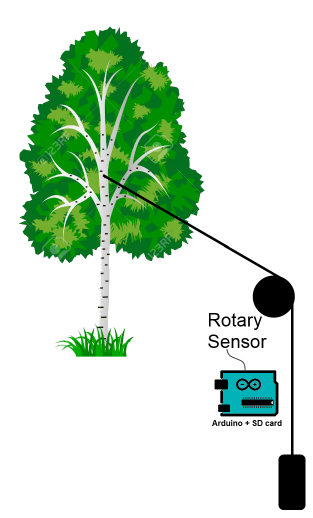 The spools are sitting on ballbearings, everything is 3D-printed:
The spools are sitting on ballbearings, everything is 3D-printed: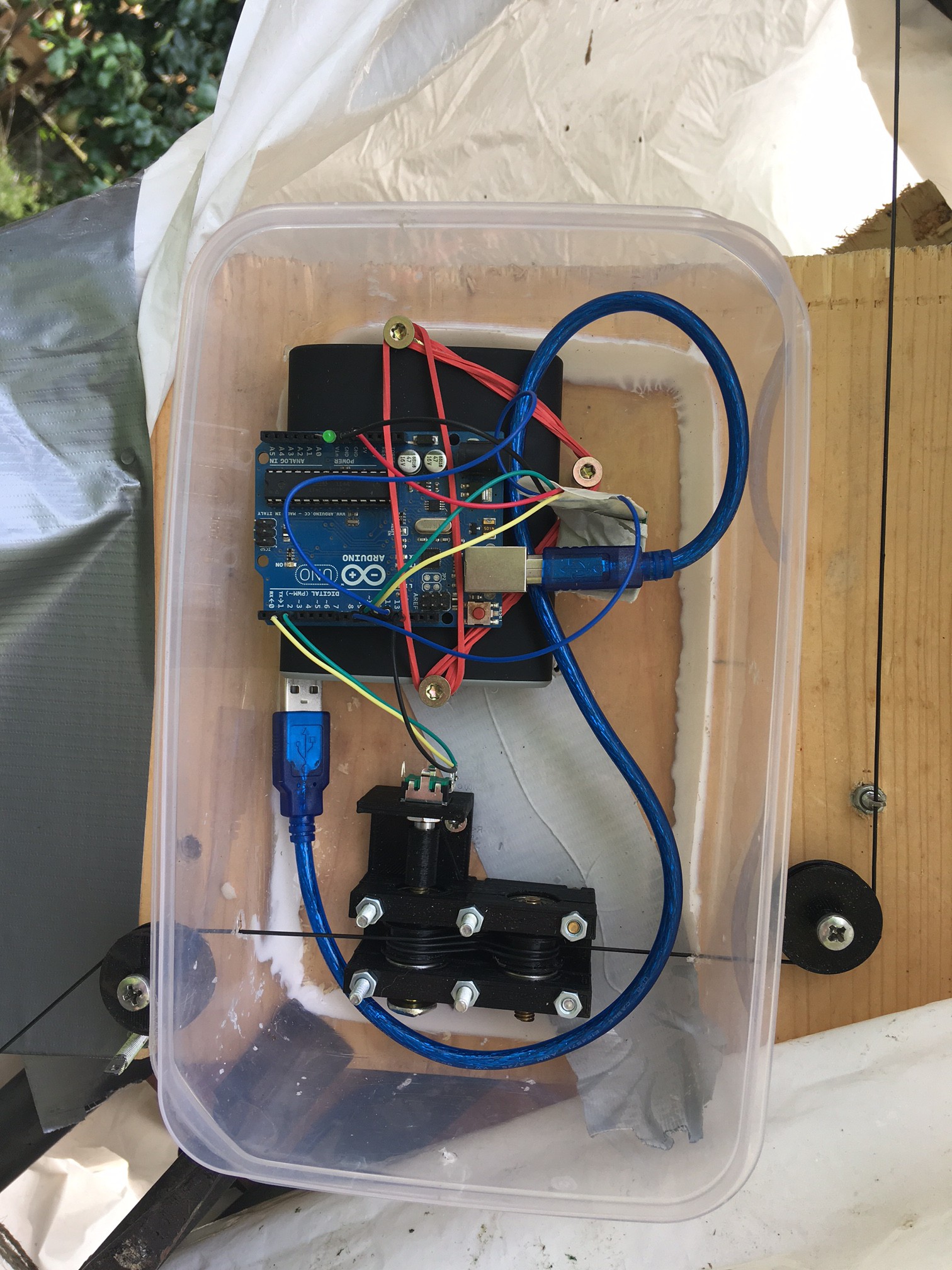 The whole setup is encapsulated in a lunch box and screwed to a wooden plate. The Arduino is connected to a power bank with 10000mAh which should provide power for several days.
The whole setup is encapsulated in a lunch box and screwed to a wooden plate. The Arduino is connected to a power bank with 10000mAh which should provide power for several days. 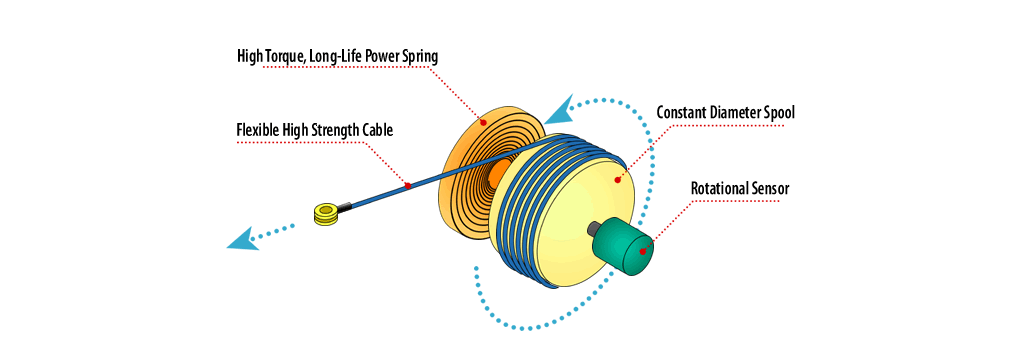 My design there are two spools, so the string does not wind up, and my design uses a weight as the pullback force, not a spring:
My design there are two spools, so the string does not wind up, and my design uses a weight as the pullback force, not a spring: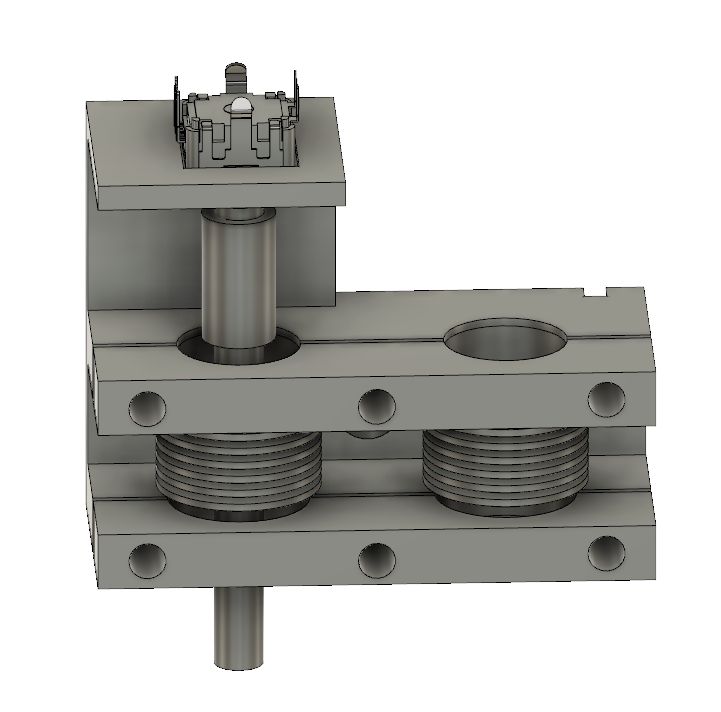 The next step is to print out the holding structure, the spools and assemble everything.
The next step is to print out the holding structure, the spools and assemble everything.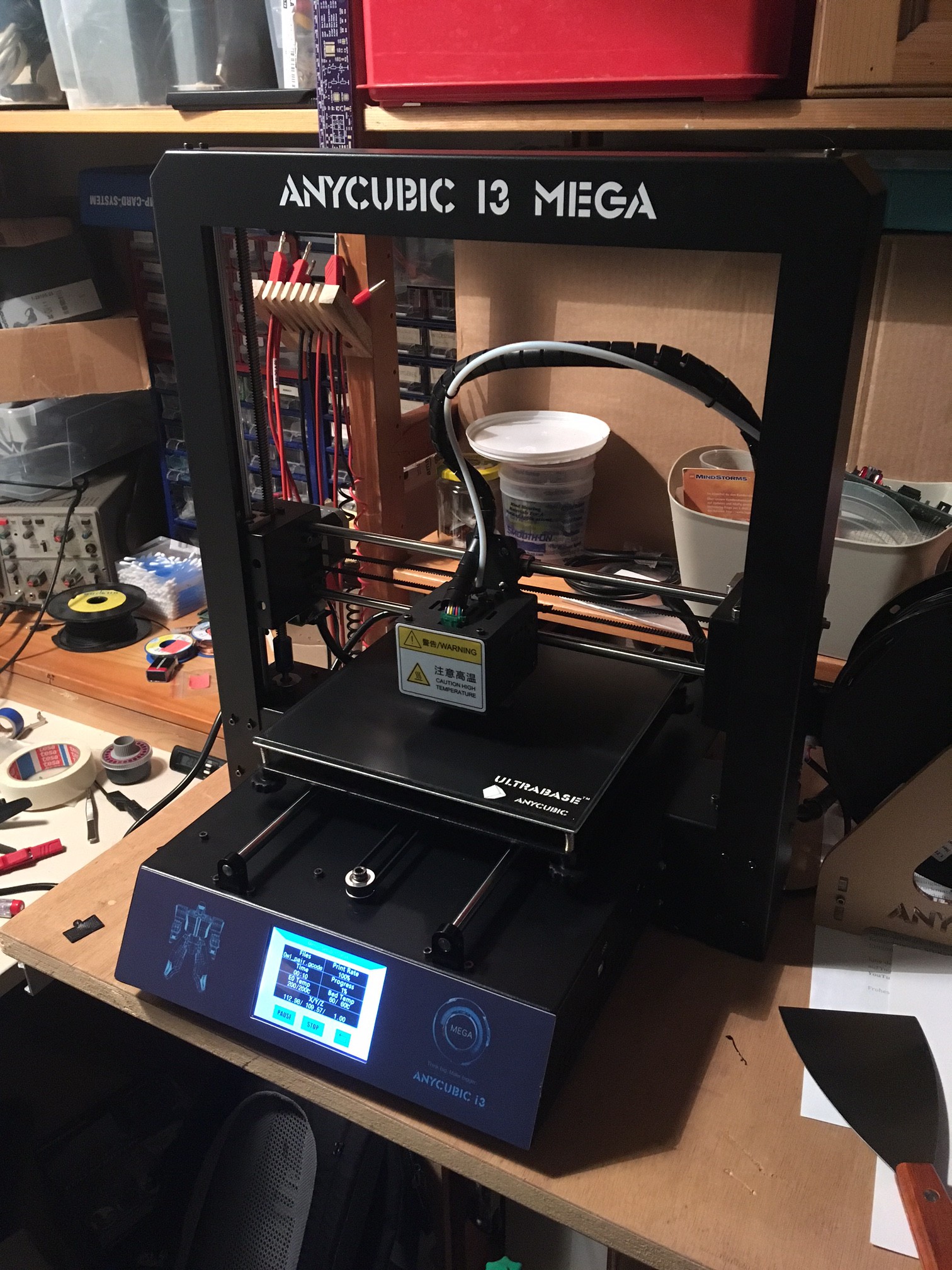

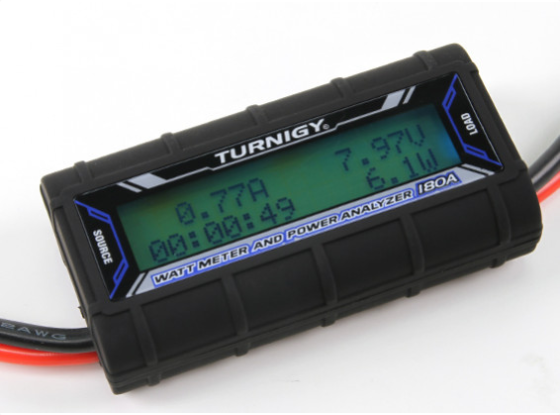 The are used to monitor battery charging, power consumption and other stuff. With external power they have a voltage range 0-60V, the can handle currents up to 180A and measure the energy with a resolution of 0.1Wh, which should be sufficient for the first prototype with the stepper motor up to the coming, much bigger, prototypes. Off course it would also be possible to measure voltage and current with an Arduino and then make the energy calculation myself, but sometimes you have to take the quick route.
The are used to monitor battery charging, power consumption and other stuff. With external power they have a voltage range 0-60V, the can handle currents up to 180A and measure the energy with a resolution of 0.1Wh, which should be sufficient for the first prototype with the stepper motor up to the coming, much bigger, prototypes. Off course it would also be possible to measure voltage and current with an Arduino and then make the energy calculation myself, but sometimes you have to take the quick route. A second version will have a strong spring in it, so together with the position data I can calculate the force for every point in time, with that also the work done and therefore the minimal energy which the tree can give away.
A second version will have a strong spring in it, so together with the position data I can calculate the force for every point in time, with that also the work done and therefore the minimal energy which the tree can give away.